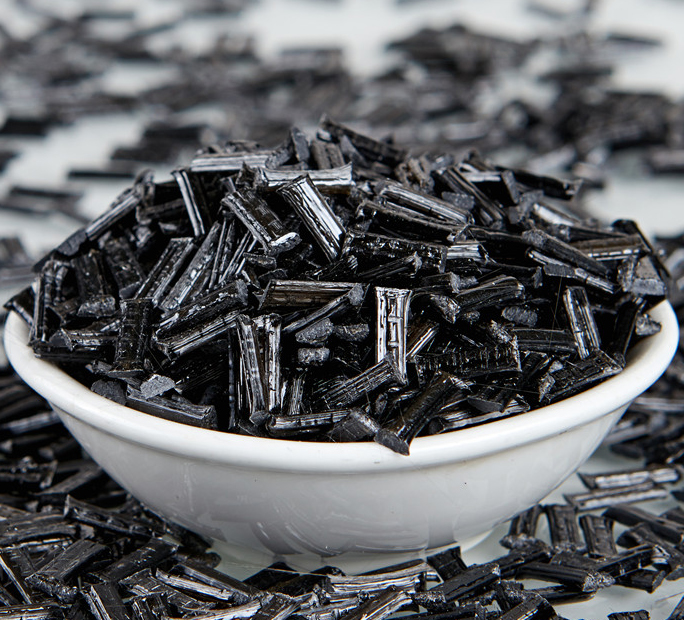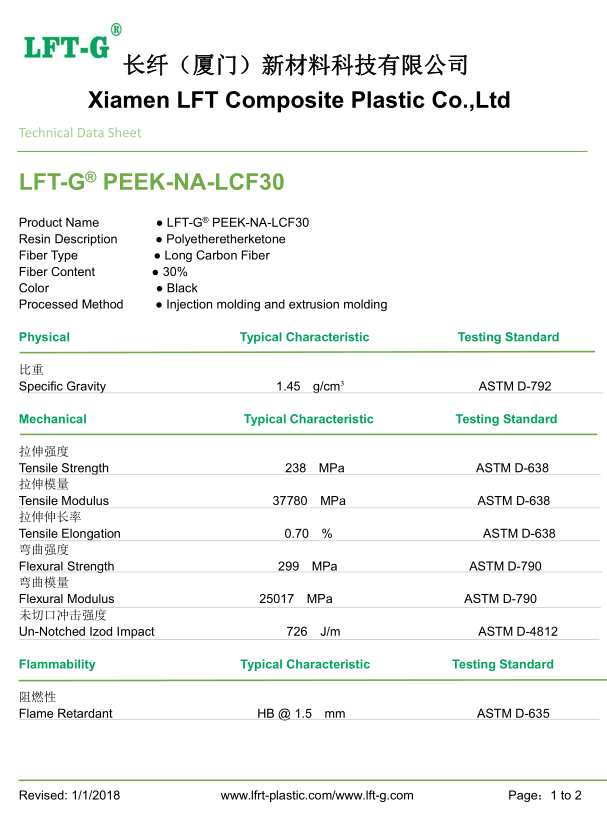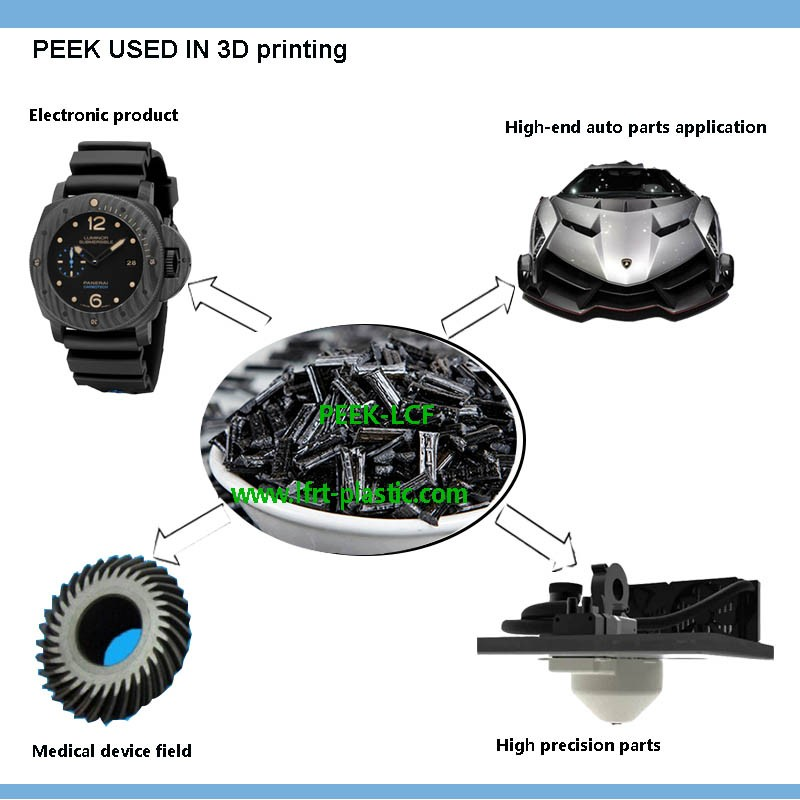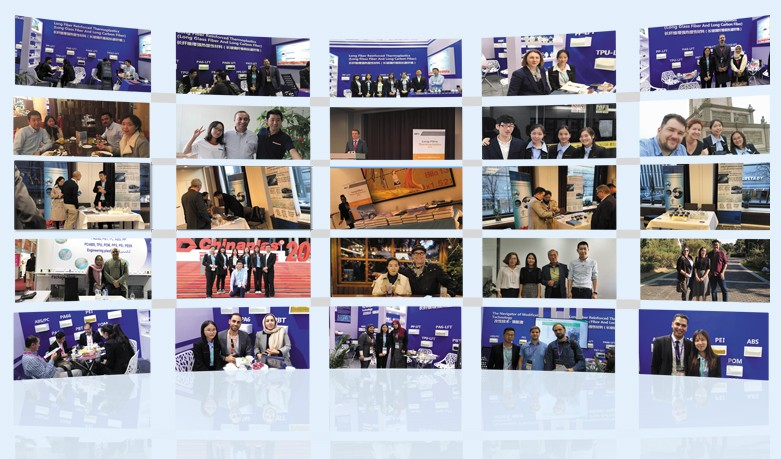Artículo No.:
PEEK-NA-LCF30Pago:
T/T or L/C (other payment ways also can be diorigen del producto:
Xiamen, ChinaColor:
Original color (also can be customized)Puerto de embarque:
Xiamen, ChinaWhat is PEEK?
Polyether ether ketone (PEEK) is a semi-crystalline thermoplastic polymer material with rigid benzene ring, compliant ether bond and carbonyl group which can promote the intermolecular force in its molecular chain. PEEK has excellent wear resistance, electrical insulation, anti-radioactivity, chemical stability, biocompatibility and thermal stability. In addition, PEEK is reusable and has a high recovery rate.
PEEK is widely used in aerospace, electronic and electrical appliances, biomedicine, Marine protection, automobile industry and other fields. PEEK material is an inert material with low surface free energy, and its mechanical properties and frictional properties cannot meet the needs of some special fields. Therefore, it is necessary to modify PEEK composite material to improve its comprehensive properties.
At present, filling modification and blending modification are the main methods for preparing PEEK composite materials. Filler modified reinforcement materials mainly include fiber, inorganic particles and whisker; The polymer used for blending modification should have similar polarity and solubility to PEEK. The interface modification method can improve the interface adhesion and enhance the comprehensive properties of PEEK composites.
What is PEEK-LCF?
As a filling system, fiber can effectively carry part of the load, and the synergistic action between fiber and PEEK can improve the comprehensive performance of composite materials. Carbon fiber and glass fiber are widely used as filler modified composites because of their high strength, high modulus and high durability. Long carbon fiber (LCF) can be used as heterogeneous nucleating agent to promote the crystallization of PEEK in composite materials, which can effectively improve the mechanical and tribological properties of composite materials.
Se prepararon composites PEEK/CF de diferentes longitudes mediante moldeo por inyección y se estudiaron sus propiedades infiltrantes y tribológicas. Los resultados muestran que la adición de CF aumenta el ángulo de contacto y disminuye la hidrofilia de los compuestos. Pero el coeficiente de fricción de los materiales compuestos se reduce y se mejora la resistencia a la fricción. La fibra de carbono larga (LCF) tiene un mejor efecto en la reducción del coeficiente de fricción que la fibra de carbono corta (SCF).

TDS para referencia

Solicitud

Preguntas y respuestas
1. ¿Cuáles son las ventajas de los materiales de fibra de carbono largos?
R: El material de fibra de carbono termoplástico LFT Long tiene alta rigidez, buena resistencia al impacto, baja deformación, baja contracción, conductividad eléctrica y propiedades electrostáticas, y sus propiedades mecánicas son mejores que las de la serie de fibra de vidrio. La fibra de carbono larga tiene las características de un procesamiento más liviano y conveniente para reemplazar los productos metálicos.
2. ¿Hay algún requisito de proceso especial para los productos de moldeo por inyección de fibra de carbono larga?
R: Debemos considerar los requisitos de fibra de carbono larga para la boquilla de tornillo de la máquina de moldeo por inyección, la estructura del molde y el proceso de moldeo por inyección. La fibra de carbono larga es un material de costo relativamente alto y es necesario evaluar el problema de rendimiento de costos en el proceso de selección.
3. El costo de los productos de fibra larga es mayor. ¿Tiene un alto valor de reciclaje?
R: El material termoplástico de fibra larga LFT se puede reciclar y reutilizar muy bien.

Te ofreceremos:
1. Parámetros técnicos del material LFT y LFRT y diseño de vanguardia
2. Diseño y recomendaciones del frente del molde
3. Brindar soporte técnico, como moldeo por inyección y moldeo por extrusión.